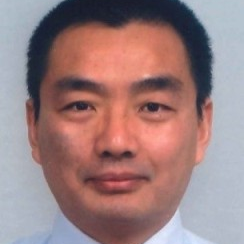Advancements in RF, Microwave, and Millimeter-Wave Circuits and Devices
A special issue of Electronics (ISSN 2079-9292). This special issue belongs to the section "Microwave and Wireless Communications".
Deadline for manuscript submissions: closed (30 September 2021) | Viewed by 24412
Special Issue Editors
Interests: radio frequency identification; wireless sensors; RFID data fusion; smart healthcare; fil-tering devices; RF power dividers; antennas
Special Issues, Collections and Topics in MDPI journals
Interests: wireless power transfer; energy harvesting; RF devices; metamaterials
Special Issues, Collections and Topics in MDPI journals
Special Issue Information
Dear Colleagues,
Microwave is a term used to describe electromagnetic (EM) waves with frequencies ranging from 300 MHz to 300 GHz. This frequency range corresponds to the free space wavelengths of 1 m to 1 mm, respectively. EM waves with frequencies ranging from 30 to 300 GHz are commonly known as millimetre-waves because their wavelengths fall above 1 mm and below 10 mm. The radio frequency (RF) spectrum lies below the microwave spectrum. However, the boundary between RF and microwave spectrums is arbitrary and depends on the technology developed for the exploitation of the specific spectrum.
This Special Issue is to focus on the recent developments in the analysis, design, implementation and measurement of RF, microwave and millimeter-wave circuits and devices including (but not limited to) filters, amplifiers, antennas, diplexers/multiplexers, power dividers/combiners, couplers, antennas, wireless power transfer and energy harvesting, etc. for modern communication systems. Research works based on all transmission line technologies including slotline, stripline, coplanar waveguide (CPW), waveguide, microstrip and substrate-integrated waveguide (SIW) are welcomed for this Special Issue. Authors are invited to submit their latest research findings (including simulation and measurement results) for publication. Both regular articles and review papers are welcomed.Dr. Augustine O. Nwajana
Dr. Jiafeng Zhou
Guest Editors
Manuscript Submission Information
Manuscripts should be submitted online at www.mdpi.com by registering and logging in to this website. Once you are registered, click here to go to the submission form. Manuscripts can be submitted until the deadline. All submissions that pass pre-check are peer-reviewed. Accepted papers will be published continuously in the journal (as soon as accepted) and will be listed together on the special issue website. Research articles, review articles as well as short communications are invited. For planned papers, a title and short abstract (about 100 words) can be sent to the Editorial Office for announcement on this website.
Submitted manuscripts should not have been published previously, nor be under consideration for publication elsewhere (except conference proceedings papers). All manuscripts are thoroughly refereed through a single-blind peer-review process. A guide for authors and other relevant information for submission of manuscripts is available on the Instructions for Authors page. Electronics is an international peer-reviewed open access semimonthly journal published by MDPI.
Please visit the Instructions for Authors page before submitting a manuscript. The Article Processing Charge (APC) for publication in this open access journal is 2400 CHF (Swiss Francs). Submitted papers should be well formatted and use good English. Authors may use MDPI's English editing service prior to publication or during author revisions.
Keywords
- multiport networks;
- filters;
- amplifiers;
- antennas;
- power dividers/combiners;
- diplexers/multiplexers;
- frequency selective surfaces;
- metamaterials;
- wireless power transfer and energy harvesting;
Benefits of Publishing in a Special Issue
- Ease of navigation: Grouping papers by topic helps scholars navigate broad scope journals more efficiently.
- Greater discoverability: Special Issues support the reach and impact of scientific research. Articles in Special Issues are more discoverable and cited more frequently.
- Expansion of research network: Special Issues facilitate connections among authors, fostering scientific collaborations.
- External promotion: Articles in Special Issues are often promoted through the journal's social media, increasing their visibility.
- e-Book format: Special Issues with more than 10 articles can be published as dedicated e-books, ensuring wide and rapid dissemination.
Further information on MDPI's Special Issue polices can be found here.






